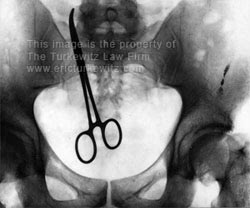
Generally speaking, one can’t sue a doctor that does a medical-legal exam for the other side. These exams come up in the context of Workers’ Compensation trying to cut off a worker’s benefits, Defense Medical Exams for personal injury suits where too many doctors seem to claim that every injury under the sun is one that pre-existed the accident, or cutting off benefits under the wreck of legislation that we call No-Fault.
Historically, the bar to such suits takes place because there is no duty of care between the examiner and the examinee.
But last week New York’s Appellate Division First Department said that these doctors can, in fact, be sued, if three conditions are met. This is based on “an implied physician-patient relationship” if the examiner gives advice.
In Badalto v. Rosenberg, a unanimous panel of the First Department wrote that
“In the context of a physical examination conducted for the purpose of rendering an evaluation for a third party, such as an employer or insurer, an implied physician-patient relationship may arise if the physician either affirmatively treats the examinee or affirmatively advises the examinee as to a course of treatment.”
The three conditions set forth by the court are:
1. that the advice was incorrect,
2. that it was foreseeable that the plaintiff would rely on the advice, and
3. that the plaintiff detrimentally relied on the advice.
So if then, hypothetically, a doctor does an exam for a Workers Compensation carrier, and claims the worker can go back to work — advice for which the physician had previously been immune — and the worker relies on that advice to go back to work and is injured, the doctor can be held liable.
Can you see where this is going? All those 5-10 minute quickie exams done by doctors on behalf of insurance companies may now subject those doctors to liability. If a doctor is going to cut off benefits, s/he will now have to write that the worker can go back to work, but also write that the worker shouldn’t actually rely on this opinion. The physicians will have to write, essentially, that their opinions are actually worthless and should not be relied upon. If an injured party shouldn’t rely on it, why should a judge or jury?
Of course, there is the other option. Doctors can actually do legitimate exams instead of selling their souls to the insurance companies.
Links to this post:
Court Decision Protects Plaintiffs By Making Defense Doctors …
Court-ruling-on-DME-doctor-liability Most people take it as a given that doctors are accountable for accurate, competent care of EVERY person whom they see in a professional capacity. It’s difficult to believe, but until just recently, …posted by Jim Reed @ December 30, 2009 11:15 AM
Around the web, December 3
All-New York edition: New York “ranks dead last in 18 of 28 legal categories” on litigation cost, per new Pacific Research Institute report [Lawrence McQuillan, “An Empire Disaster: Why New York’s Tort System is Broken and How to Fix …posted by Walter Olson @ December 03, 2009 12:09 AM



